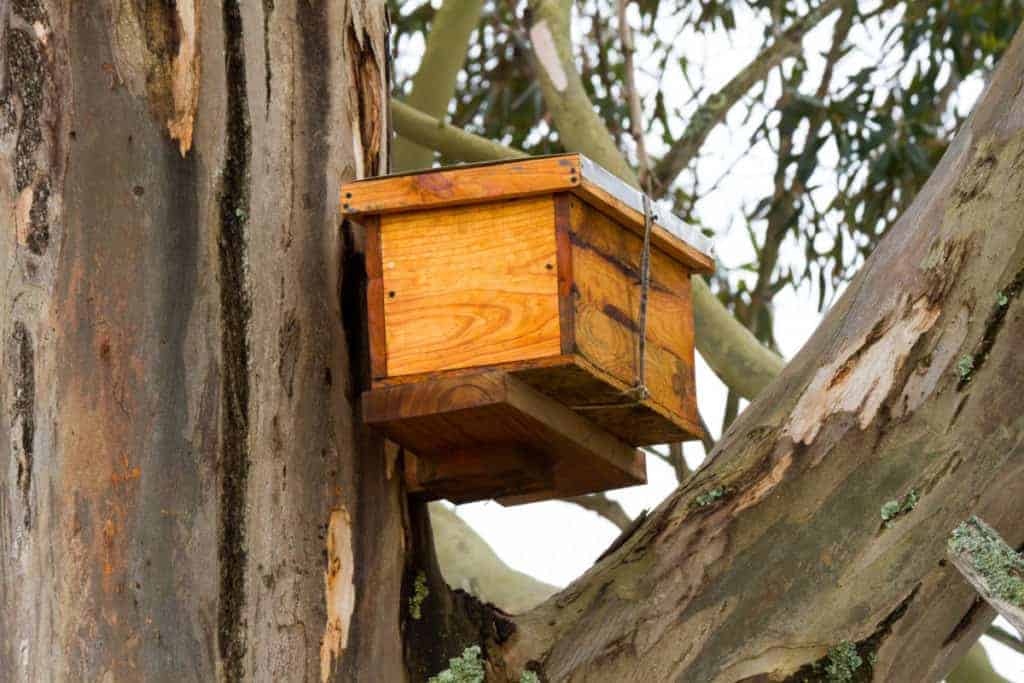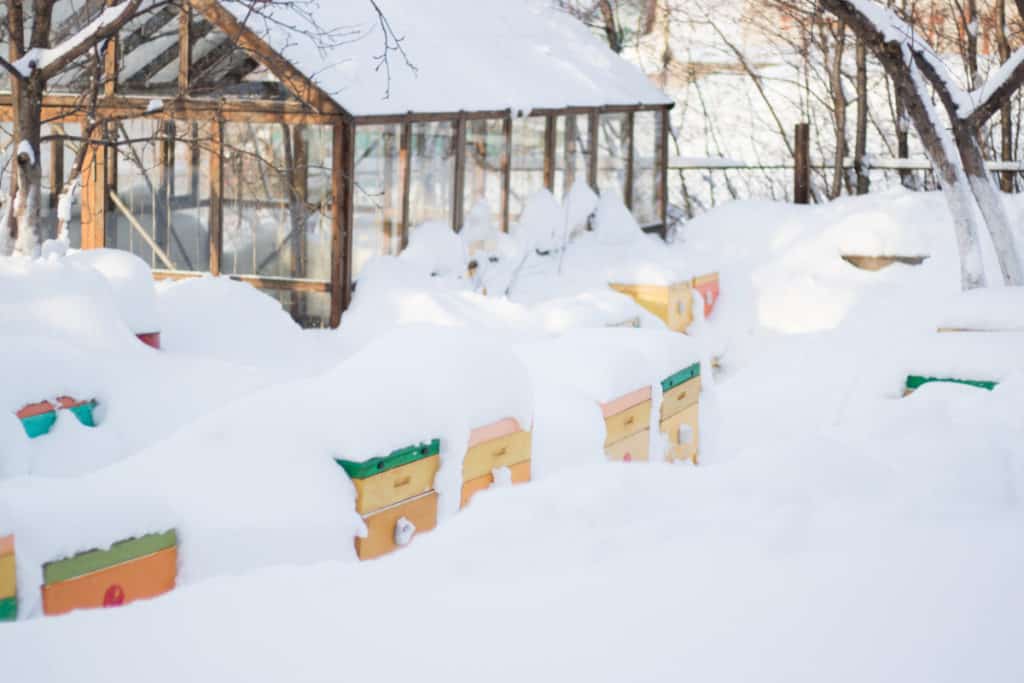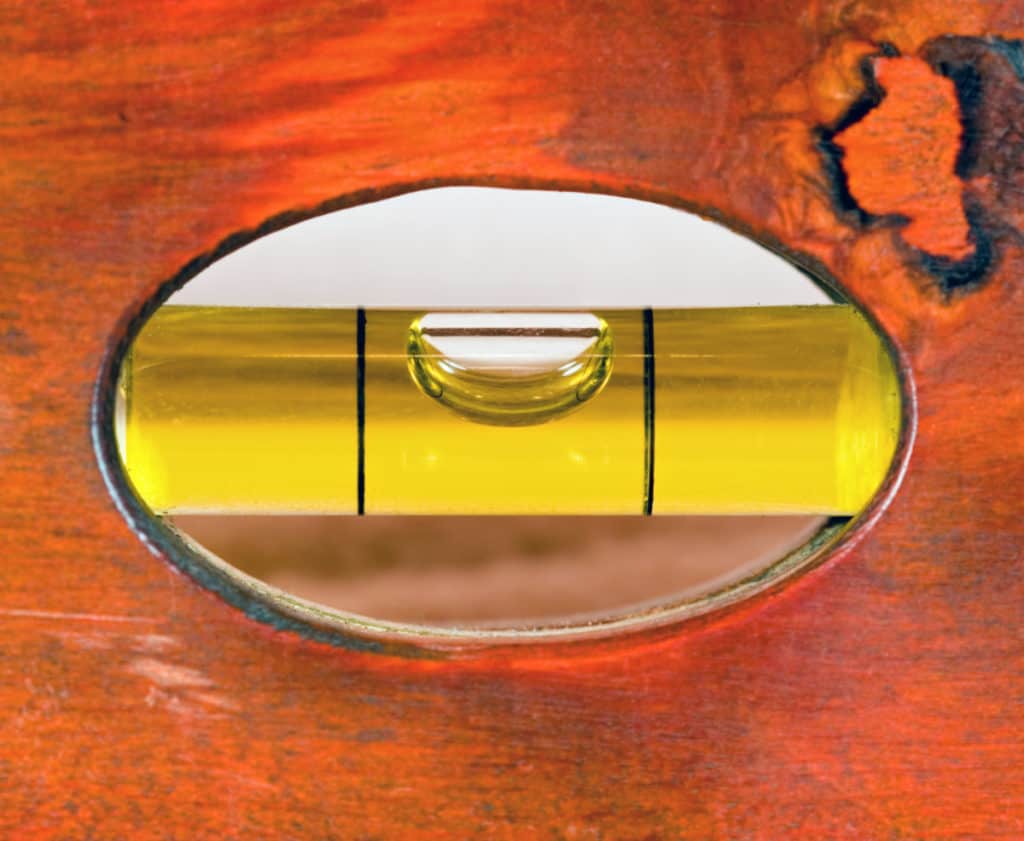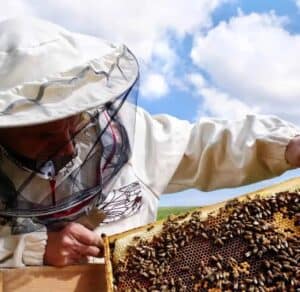How High Off The Ground Should A Beehive Be? Sore Back?
As a new beekeeper, you will find a surprisingly amount of conflicting information regarding the placement of your beehives. I have found the simplest solutions are often the best and this also applies to the height of your beehive off the ground. So, is there an optimal height a beehive should be off the ground?
A beehive should be at least 6 to 10 inches off the ground. This will keep the beehive entrance clear of ground level moisture and the bottom board from sitting on the ground. Wooden pallets or concrete cinder blocks are commonly used as a beehive stand for this purpose.
Often new beekeepers will spend a lot of extra money on special hive stands and equipment. Now that’s great if you have the extra cash but I’ve realized that some very simple solutions are far more cost effective and work just as well if not better.
I’ll delve into several of these solutions that I believe will be helpful regarding the placement of your hives.
How High Should Beehives Be Off The Ground

When I began researching online what other people were suggesting as the optimal beehive height, I was quite surprised. Some of these recommended heights ranged from 18 inches all the way up to 8 feet in the air! Now that’s just not realistic for commercial operators let alone a hobbyist.
Placing a beehive 2 or 3 feet off the ground with a special hive stand is great for a hobbyist but isn’t realistic as you expand your apiary. But setting up your hives 4 or 5 feet in the air is something else entirely and I’m not talking about swarm traps. No one does this and good luck inspecting your hives without injuring your back.
Don’t get me wrong some of these hive stands are great but you don’t necessarily need them. They are more aimed for the beekeeper hobbyist who manages 1 to 5 beehives. Otherwise they tend become too expensive as you expand your apiary.
Also, if you do harvest honey and begin stacking your hives with honey supers, how much weight can these bee stands handle? In fact, they could also become a tipping hazard. This is just something to consider if you decide to expand your apiary and honey production.
Most commercial bee operations use wooden pallets as their beehive stands. Some smaller bee operations will use a combination of concrete cinder blocks, wooden pallets or simply placing 2×4’s on the ground. These are all simple cost-effective solutions that keep their hives 6 to 10 inches of the ground.
This simple solution keeps the hive entrances from ground level moisture and the bottom board from sitting on the ground. In colder regions, this will keep your hives from being frozen into the ground during the winter and reduces snow and ice from blocking the hive entrance.
Brief side note – Snow is a great insulator for beehives in the winter by completely covering the hive. The warmth from the beehive will form a cone inside the snow to allow for ventilation while still insulating and forming a wind barrier.
But you do need to make sure the entrance is not frozen over. Ice can and will cover the entrance and then your bees will suffocate.

What I like about using wooden pallets is you can actually kneel down beside your beehives while working your bees. Thereby reducing the amount of strain on your back.
Beekeeping can be back breaking work on a good day when handling 60 to 80lb boxes. So why not reduce the impact on your back as much as possible.
But, as with everything in beekeeping there is no perfect solution. Having your bees closer to the ground means rodents and pests have easier access to the hives. Mice and rodents are pretty easy to deal with while skunks can be more problematic.
Keeping mice out isn’t an issue as long as you look after your equipment and reduce the hive entrances in the fall. This will reduce the chance of mice entering the hives since they cannot crawl through a very small entrance.
You can also use 1/4 inch mesh wire or even place small nails across the hive entrance. But often simply using an entrance reducer works just fine.
If you do have skunks in your area some beekeepers will place their hives 16 to 18 inches off the ground. This causes the skunk to stand up and exposing their soft belly to bee stings. Again, a combination of concrete cinder blocks and 2×4’s also works well in this instance.
Top Hive Entrances – Another solution some beekeepers use is a top hive entrance rather than the traditional bottom hive entrance. This has proven to be effective in keeping skunks and mice from getting into their hives.
Do Beehives Need To Be Level

When setting up your beehives it’s not really that important to be perfectly level. In fact, no beekeeper is going to take a level and check all their beehives. Realistically your going to eyeball it and not use a level to check your hives.
You don’t want your beehive to be on an extreme angle, but you only need to setup your hives on fairly level dry ground. It’s great to have the beehive a few millimeters lower on the front to help with water running off the top, but it doesn’t matter that much.
You do want your hives to be almost level across the top or level side to side for Langstroth hive boxes. For example, in Langstroth hives they do need to be fairly level because you’re going to be stacking on top more brood boxes and/or honey supers as the season progresses.
This can quickly become a tipping hazard as the number of boxes stacked are closing in 5-8 boxes. It is quite common during a strong honey flow to have 5-8 hive boxes deep per colony and can become dangerous if not reasonably level.
Also, if your using foundationless frames it’s ideal to have fairly level hives to make it easier for your bees to draw straight comb.
Another common issue is when your feeding your honeybees syrup. You want the hives to be somewhat level when placing gallon size pails or jars on top of your hives. This will ensure a good vacuum seal between the pail and the top of the hive. Otherwise the syrup will run out faster than the bees can consume it.
As I said, nobody uses an actual level to check their hives, it’s unrealistic and people just eyeball it. Most large and small commercial operations use wooden pallets and don’t worry about leveling their hives. They simply place their pallets of hives on dry and reasonably level ground.
Related Questions
What direction should a beehive face? Bees do not care what direction their hive is facing. Bees in the wild have not demonstrated a statistical preference when choosing one direction for the front of their hives. Bees are flexible and will adjust to their environment.
How close can beehives be placed together? It is recommended to place your hives at least two feet apart. This is no hard and fast rule, but it does make it easier for inspecting your hives. If you agitate one hive, you’re less likely to agitate the other hives if they’re not located close together.
What kind of smoke is best for calming bees? Smoker fuel that produces a nice cool, light smoke and will burn for long time is great for calming bees. Materials such as cotton fuel pellets, wood chips, untreated burlap, and untreated baling twine are easy to light, burn slowly and are very affordable. Not to mention, bee and environmentally friendly.
When is the best time of day to inspect a beehive? The best time to inspect your hives is on calm, warm and sunny day between 11am and 4pm. The forager bees will be out working rather than guarding the hive. Flying bees are happy bees.

Joseph Davis
My goal is to show that anyone can take up beekeeping and it can be a very rewarding hobby. I strive to share my experiences and answer any questions you may have.
